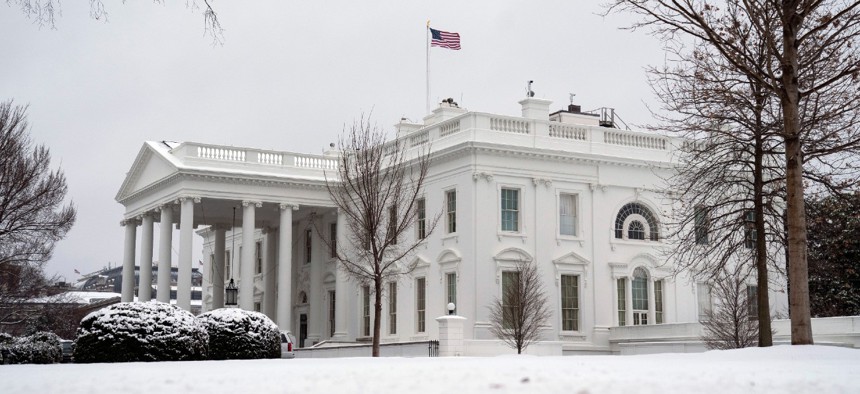
Evan Vucci / AP
OPM Clarifies Weather Closure Policy Amid Maximum Telework
Although many federal workers have been working remotely due to the COVID-19 pandemic, OPM reiterated the importance of following inclement weather closure procedures for feds who still commute.
The Office of Personnel Management on Wednesday urged agencies to ensure that all federal employees know and understand the policies on closures for inclement weather and other emergencies, particularly in light of the “maximum telework” posture adopted across much of the federal government during the novel coronavirus pandemic.
In a memo to agency heads, acting OPM Director Kathleen McGettigan “strongly encouraged” agencies to review OPM’s existing procedures for dismissing employees and closing offices. McGettigan highlighted how OPM comes up with its decisions to dismiss, close or delay the opening of federal agencies in the Washington, D.C., area.
“To make the operating status decision, OPM works directly with the Metropolitan Washington Council of Governments, including the National Weather Service, D.C. government, municipal and regional officials, along with the Washington Metropolitan Area Transit Authority and other regional transportation officials regarding how to respond to severe weather, emergency situations and other special events that cause disruptions in the Washington, D.C., area.”
Although many federal employees have been in a “maximum telework” posture for nearly a year, McGettigan reiterated that agencies still must inform all employees of weather- and emergency-related closures, particularly since some feds still commute to their office for work. Additionally, the increased number of employees on telework means that it can be more confusing for federal workers trying to understand what they need to do during a winter storm, she said.
McGettigan cited a recent snowstorm, when OPM announced a two-hour delay, with the option for feds to take unscheduled leave or telework. Those who had been teleworking due to the pandemic were expected to begin teleworking on time, since they did not have to report to their normal work site. And employees designated as “emergency employees,” were still expected to report to work on time, unless their agency directed them otherwise. But employees who must report to work but who are not considered “emergency employees” were authorized to take up to two hours of weather and safety leave at the start of their scheduled work day.
“It is critical that all employees understand which human resources flexibilities are available to them during each type of operating status, such as unscheduled telework, unscheduled leave, leave without pay, alternative work schedule day off, etc.,” McGettigan wrote. “In an emergency, timing is crucial. Employees must be able to act under their own agency’s procedures when unscheduled telework or unscheduled leave are options, or when teleworking during office closures.”







